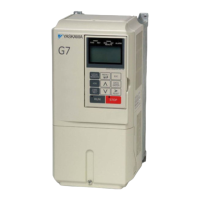
Do you have a question about the YASKAWA Varispeed G7 Series and is the answer not in the manual?
General guidelines and precautions for using the Varispeed G7 Series Inverters, emphasizing safety and proper handling.
Checks to perform immediately after receiving the inverter to ensure correct model and no shipping damage.
Precautions and guidelines for safely installing the inverter, including mounting, cooling, and environmental considerations.
Essential safety precautions and guidelines for wiring the inverter's main and control circuits to prevent hazards.
Overview of Varispeed G7 inverter models, including voltage classes and maximum motor capacities.
Checklist for confirming the inverter upon delivery, including items, damages, and nameplate information.
Identification of external components and parts of the inverter for proper handling and installation.
Diagrams and dimensions for Open Chassis and Enclosed Wall-mounted inverter types for installation planning.
Guidelines for installing the inverter vertically and providing adequate space for heat dissipation.
Step-by-step instructions for removing and attaching the terminal cover for wiring access.
Procedures for removing and attaching the digital operator and front cover, including specific steps for different inverter capacities.
Instructions for removing and attaching the top and bottom protection covers on inverters of 15 kW or less.
Summary of connections between the inverter and various peripheral devices, including their purpose and model codes.
Important precautions for selecting and installing peripheral devices like ground fault interrupters and magnetic contactors.
Detailed connection diagram for the inverter, illustrating main and control circuit wiring for operation.
Diagrams showing the terminal arrangement for 200 V Class Inverters, illustrating main and control circuit terminals.
Guidance on applicable wire sizes, closed-loop connectors, and terminal specifications for main circuits.
Details on wire sizes, closed-loop connectors, and terminal functions for control circuit wiring.
Procedure for checking all wiring after completion to ensure correctness and absence of foreign material.
Information on option board models, specifications, installation procedures, and wiring.
Description of the Digital Operator's component names, functions, and key operations for inverter control.
Overview of the inverter's operating modes: Drive, Quick Programming, Advanced Programming, Verify, and Autotuning.
Flowchart detailing the steps for performing trial operation of the inverter.
Detailed procedures for trial operation, including setting voltage jumpers, power ON, display status, and control methods.
Guidance on adjusting constants to resolve issues like hunting, vibration, or slipping during operation.
Explanation of the structure and components of the user constant tables, including names, descriptions, and settings.
Hierarchy of the Digital Operator display, showing functions and levels for modes like Drive, Quick, Advanced Programming, Verify, and Autotuning.
Detailed tables listing user constants for various functions like Setup, Operation Mode, DC Injection Braking, Speed Search, etc.
Explanation of how to input the frequency reference, including selection of the source and using analog signals or pulse trains.
Explanation of input methods for the Run Command, including Digital Operator, control circuit terminals, and 2-wire/3-wire sequences.
Details on the four methods for stopping the inverter: deceleration, coast, DC braking, and coast with timer.
Explanation of acceleration and deceleration times, including setting units and switching using multi-function inputs.
Methods for adjusting frequency references, including analog inputs, jump frequencies, and reference frequency hold.
Functions to limit the motor speed by setting maximum output frequency and minimum frequency references.
Functions to improve motor operating efficiency, including slip compensation, torque compensation, and energy saving.
Functions for protecting the machine, including reducing noise, torque limits, and stall prevention.
Functions for continuing operation or automatically restarting the inverter after a transient fault.
Explanation of functions for protecting the inverter and braking resistors from overheating.
Explanation of input terminal functions, including switching operation modes and blocking inverter outputs.
Explanation of output terminal functions, including during run status, zero-speed status, and alarm outputs.
Explanation of analog monitor and pulse monitor constants for displaying inverter status and values.
Explanation of individual functions used in special applications, such as MEMOBUS communications.
Explanation of Digital Operator functions, including setting constants, multi-function selections, and copy functions.
Information on available option boards, including PG Speed Control Boards and Communications Option Boards.
Precautions and procedures for using the inverter in elevating machines like elevators and cranes, including brake control.
Function to display current alarms (HCA) and output minor fault signals when inverter output current exceeds 150%.
Function to save and display the peak value of the inverter output current and the frequency at that moment.
Indicates when estimated service lives of cooling fan and electrolytic capacitor are reached, displaying the maintenance time.
Description of alarm functions including fault detection, alarm detection, operation error, and autotuning error.
Guidance on identifying and correcting problems with inverter and motor operation, including constant setting errors and motor issues.
Details of the inverter's warranty period, which is twelve months after delivery or eighteen months from shipment.
Items to check during daily operation, including motor vibration, heat generation, ambient temperature, and cooling fan.
Items to check during periodic maintenance, emphasizing safety precautions like turning off power and waiting for discharge.
Precautions for storing the inverter, covering temperature, humidity, dust, corrosive gas, and salt damage.
Information on the service life of electronic components and the need for periodic inspection and replacement.
Steps for adjusting constants after replacing the control board, including safety measures and checking settings.
Detailed specifications for 200 V Class and 400 V Class inverters, including output ratings and power supply characteristics.
Specifications for available option boards such as PG Speed Control, Analog Reference, Digital Reference, and Output Boards.
Overview of the five control methods supported by Varispeed G7 Inverters and their features.
Precautions for selecting, installing, setting, and handling inverters, including reactor installation and inverter capacity.
Precautions for applying the inverter to various motor types, including low speed, high speed, special motors, and vibration.
Installation site, ambient temperature, main circuit terminal, and interrupting rating requirements for UL standard compliance.
Information regarding CE markings, Low Voltage Directive, EMC Directive, and requirements for CE marking conformance.
Guidelines and precautions for using drives with the Korea Certification (KC) mark in Korea.
Information regarding China RoHS compliance, including the China RoHS mark and hazardous substances.
Wiring examples for connecting braking units, DC reactors, noise filters, and VS operators to the inverter.
Comprehensive tables of user constants, detailing their names, descriptions, setting ranges, factory settings, and control methods.
Block diagrams illustrating the control methods for V/f, V/f with PG, Open-loop Vector 1, Flux Vector, and Open-loop Vector 2 control.
A template for recording inverter problems, including inverter internal information and probable causes with corrective actions.
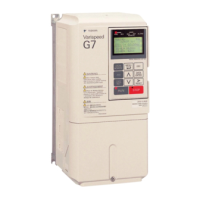

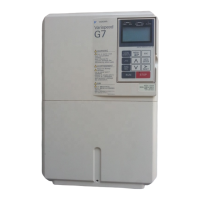
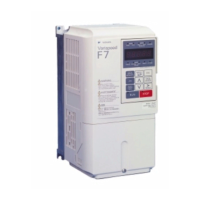
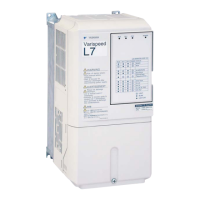
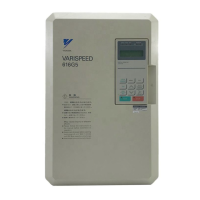

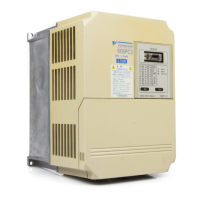
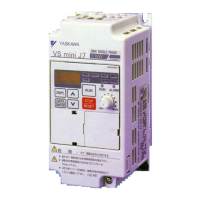
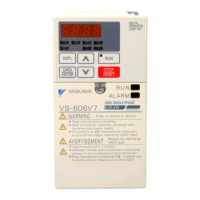
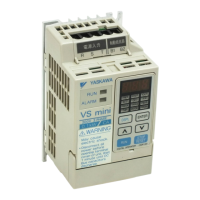
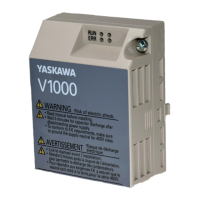
